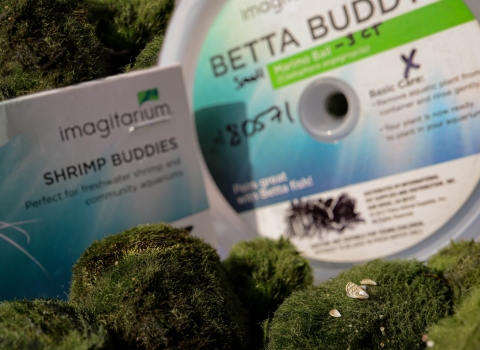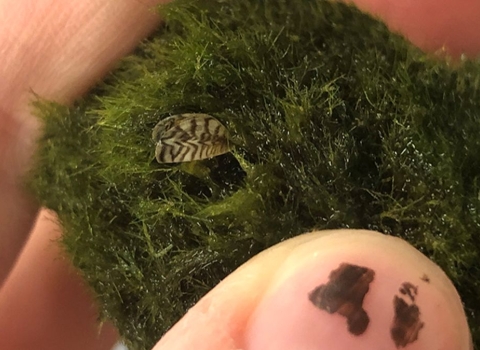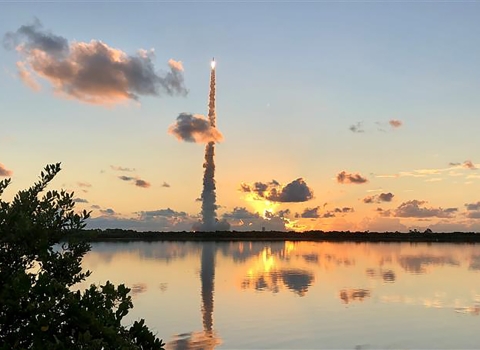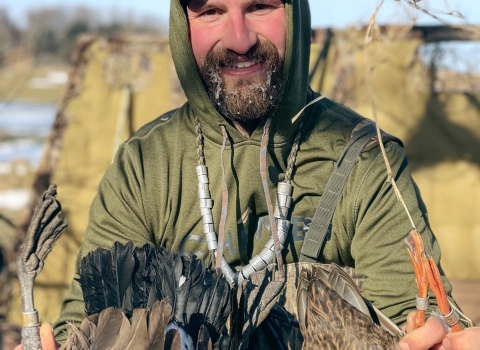In the words of Benjamin Franklin, “an ounce of prevention is worth a pound of cure.” For invasive species invasive species
An invasive species is any plant or animal that has spread or been introduced into a new area where they are, or could, cause harm to the environment, economy, or human, animal, or plant health. Their unwelcome presence can destroy ecosystems and cost millions of dollars.
Learn more about invasive species management this is often referred to as early detection and rapid response, or EDRR.
Early detection is crucial for identification of new populations of invasive species before they have a chance to establish and spread. Rapid response allows for immediate action to implement control or eradication measures for invasive species while the population is still in limited distribution. EDRR minimizes ecological impacts and reduces economic costs associated with invasive species.
This summer, July 2024, invasive species management practitioners from across Alaska and the lower-48 states gathered for the first collaborative hands-on training for invasive quagga and zebra mussel sampling in Alaska, dubbed “All Hands on Deck for Early Detection”. These small, highly invasive mussels are not known to occur in Alaska.
The Problem
Collectively known as dreissenid mussels, zebra and quagga mussels, are native to Eastern Europe. They were first discovered in the United States in the late 1980s, likely introduced via ballast water discharge from vessels originating overseas. Within a few years they had spread across the Great Lakes region and were marching west on overland boats and other secondary spread pathways.
Despite their small size (often less than 1 inch), dreissenid mussels have devastating ecological and economic impacts. They filter feed (up to one gallon per day for an adult mussel!), reducing food availability for native species and removing nutrients from the ecosystem. They attach to hard surfaces, such as rocks, ropes, boats, pipes, and even native mussels, and rapidly grow in dense colonies. This can damage infrastructure and clog water intake pipes. Infestations in the Great Lakes region are estimated to cause $300-$500 million annually in damages! Mussel larvae, called veligers, are microscopic and free-floating in the water column of lakes and rivers. This means that new mussel infestations can begin with any water transported from a contaminated waterbody in recreational equipment, such as fishing gear and boats.
Collaborative Training
Unfortunately, dreissenid mussels are discovered in new waterbodies each year, highlighting the importance of EDRR activities to swiftly contain, then treat an early infestation before it gains a foothold. “All Hands on Deck for Early Detection” was the first of its kind in Alaska. Cohosted by US Fish and Wildlife Service (USFWS), Alaska Department of Fish and Game, Bureau of Reclamation (Reclamation), University of Alaska Anchorage Alaska Center for Conservation Science, and Alaska Invasive Species Partnership, the hands-on training was a two-day event featuring four field sampling techniques and lab analysis. Attendees came from a wide variety of agencies and organizations, including Tyonek Tribal Conservation District, Anchorage Soil and Water Conservation District, Joint Base Elmendorf-Richardson, Alaska Department of Natural Resources, Big Lake Community Council, USFWS Conservation Genetics Lab, Kachemak Bay National Estuarine Research Reserve, and National Park Service.
During the field portion of the event, attendees rotated through four stations led by U.S Fish and Wildlife staff to get their hands on different sampling techniques from both boats and shore. At a ponar dredge station, lake bottom sediment, plants, rocks, and other debris was collected and inspected. At a plankton throw station, plankton nets were thrown from shore and lowered from boats to collect plankton samples. These samples were field-preserved for later lab analysis for dreissenid veligers, the floating larval life stage. At the substrate inspection station, submerged artificial and existing surfaces were scraped and inspected. At the plant shakedown station, aquatic vegetation was collected, sorted, and inspected. In the lab, staff from the Reclamation Ecological Research Laboratory introduced and trained participants on analyzing plankton samples with cross-polarized microscopy for veligers and common native mollusks. Other lab stations included sample preparation, microscope calibration, field day collected sample visualization, known dreissenid mussel sample visualization, sample storage, and quality assurance and quality control methods.
Looking Ahead
The collaborative training event was a huge success! There is already discussion of next steps for cohosting a rapid response drill for dreissenid mussels, similar to the European green crab rapid response drill conducted in 2023. By acting proactively, we are enhancing our collective effectiveness of invasive species management by addressing potential issues early and minimizing ecological and economic damage.
The establishment of dreissenid mussels in Alaska would result in significant ecological and economic costs. Ecologically, they could disrupt aquatic food webs, alter habitats, and reduce biodiversity. Economically, the costs of managing infrastructure damage, increased maintenance, containment efforts, and impacts on recreation and tourism could be substantial. However, through early detection and rapid response efforts, such as the “All Hands on Deck for Early Detection”, invasive species management practitioners across Alaska are mitigating these potential impacts and protecting Alaska's aquatic environments and economic interests.
______________________________________________________________________________________
Everyone can help prevent the spread of aquatic invasive species.
Clean, drain, dry your gear before moving to a new waterbody.
Report any suspected invasive species.
- Call 1-877-INVASIV (1-877-468-2748)
- Use Alaska Department of Fish and Game Online Invasive Species Reporter











